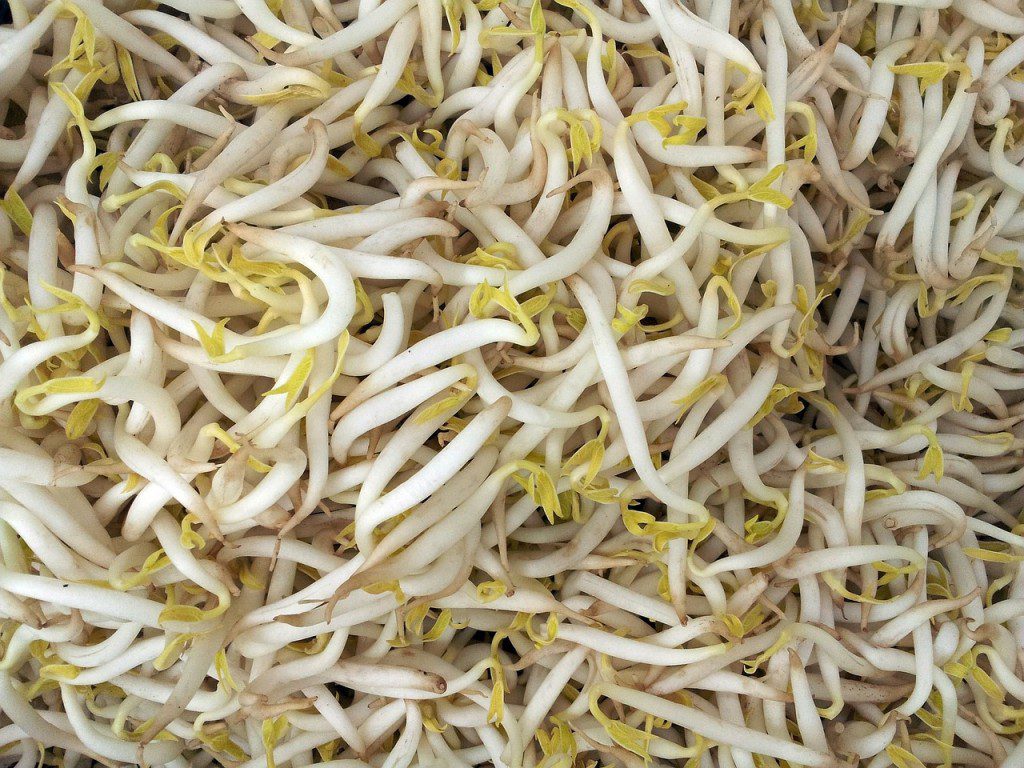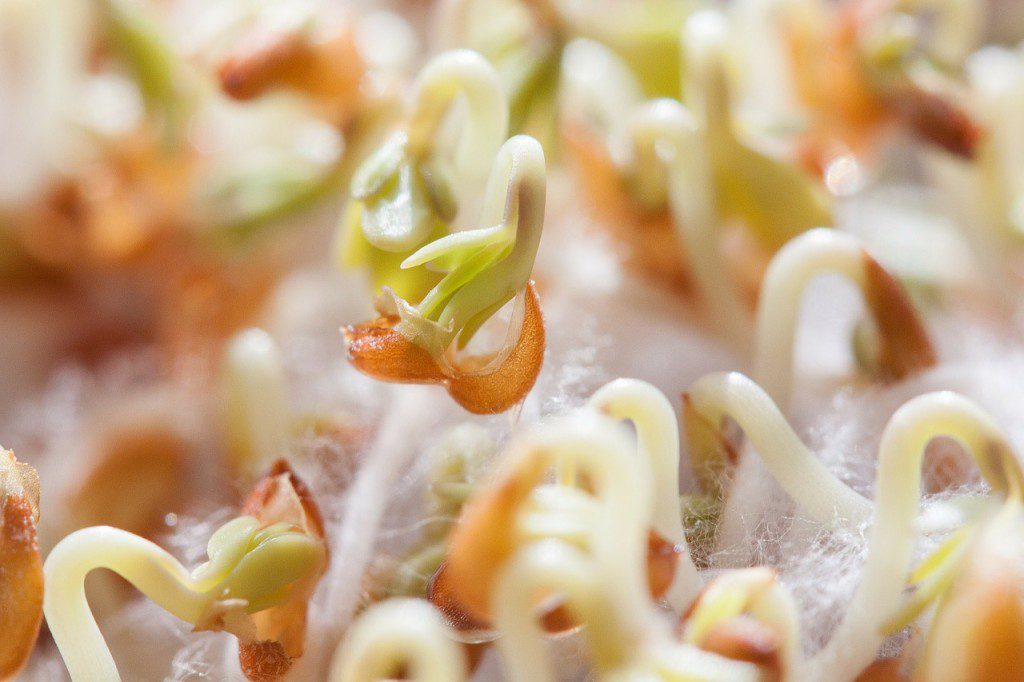There is an expression that good things come in small packages and sprouts are a perfect example of that—a nutritional powerhouse tucked inside a seed.
The process of sprouting involves germinating seeds, which “sprout” or grow into tiny nutritious plants, and are then eaten raw or cooked. Many different kinds of grasses, grains, beans, and greens can be sprouted. Some of the most popular sprouts are mung beans, alfalfa, broccoli, and clover, as well as “ancient grains” and chickpeas. If you look, you can find some of these common sprouts in the produce section of many grocery stores.

Nutritional Benefits of Sprouting
Sprouting can provide many health and nutrition benefits. Back in the 1920s an American professor named Edmond Szekely championed what he called “bio-genic” nutrition saying that sprouted seeds and baby green were the most nutritionally beneficial foods that support cell regeneration (Sprouts-as-Medicine, 2008).
Sprouts are widely praised for being high in dietary fiber, B complex vitamins (particularly B2, B5, and B6) and protein. In addition, germinating seeds produces high levels of vitamin C and increases beta carotene levels.
The changes that that occur during the sprouting process make it easier for the body to digest and derive nutrients from sprouted seed, legumes, and plants. For example, sprouting breaks down complex sugars into simpler glucose molecules and neutralizes enzyme inhibitors allowing for easier digestion. (Harris, 2009) And, sprouting whole grains reduces the amount of starch they contain and boosts their nutritional value.
There are even some claims that particular sprouts have specific benefits such as clover (for menopause symptoms in women), mung beans (for heart and blood health), and cress (for clean skin and blood purification) (Sprouts-as-Medicine, 2008).

How To Sprout
For beginners the sprouting process can seem complicated and intimidating, but once you get acclimated, it is fairly straightforward. The basic process is as follows:
- Fill a Mason jar 1/3 with seeds and the rest with filtered water.
- Soak seeds* in a Mason jar with mesh or a screen in place of the metal lid insert.
- Drain, rinse, and refill with the seeds and 2-3 times fresh water. Repeat this step every few hours or at least twice a day.
- Flip the jar and/or invert to allow for air circulation.
- Repeat steps 3 and 4 for as long as necessary until the seeds start sprouting.*
*Soaking times and sprouting times vary for different seeds/plants. There are myriad charts available online (Vegetarian Times) that detail the specific lengths of time required. Generally, most seeds require soaking times between 6-12 hours and the majority sprout within 1-4 days. For example, alfalfa sprouts in 2-5 days, while some plants will begin sprouting in less than a day.
Once the seeds have sprouted, be sure to give them a final rinse and dry them out to inhibit bacteria growth. This is often done by placing in a sunny spot for a few hours, which also helps the plants get greener. Any harmful components that nuts or seeds may contain are eliminated during the initial soaking period, which takes place prior to sprouting.
For more information and reources, we recommend checking out SproutPeople.
References
Harris, Kimberly (2009). Why Sprout? retrieved on July 13, 2015 from www.thenourishinggourmet.com/2009/01/why-sprout.html.
Masters, Tess (2013). How to Soak and Sprout Nuts, Seeds, Grains and Beans retrieved on July 13, 2015 from www.vegetariantimes.com/blog/how-to-soak-and-sprout-nuts-seeds-grains-and-beans/.
Sprouts (2008). Retrieved on July 13, 2015 from www.sprouts-as-medicine.com.
Hot to Sprout: Seeds, Beans, Grains (n.d.). Retrieved on July 13, 2015 from http://tasty-yummies.com/2014/04/22/how-to-sprout-seeds-beans-grains/.

